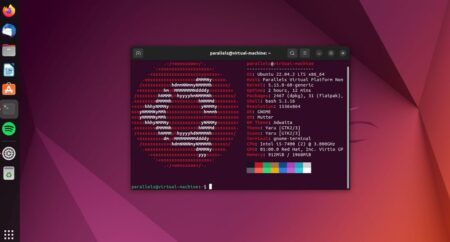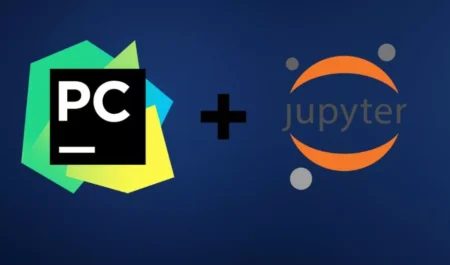1
Do you know how to Open Component Services in Windows 11/10? Many computer users have to open Windows 11/10 Component Services. Managing and troubleshooting your system requires knowing how to access Component Services, whether you’re a techie or just starting out with Windows. You may configure COM components and COM+ applications with Component Services. COM+ programmes are made up of COM components that perform related functions.
Most ways to open Windows Component Services in Windows 11/10 are given here. On Windows, you can open this tool via Command Prompt, Taskbar search box, File Explorer, Control Panel, etc. I frequently use Component Services to adjust settings, fix errors, and boost performance. Learning how to use this essential tool will help you manage your Windows experience and keep it running properly. Here are the steps how to Open Component Services in Windows 11/10.
What Is Windows 11 Services?
Windows 11 Services are vital programmes that operate in the background to keep the system and apps running. Manage these services using the Services app, Task Manager, PowerShell, or Command Prompt. To fix problems, boost performance, or customise their system, users can start, stop, enable, or disable services. Windows 11 services are essential to operating system and application performance. If you are interested in receiving additional information, you can go to the official website of Microsoft.
How to Open Component Services in Windows 11/10
Using Windows Search
- Press the Windows key + S on your keyboard to open the Windows Search bar.
- Type “Component Services” in the search box.
- Click on the Component Services option in the search results to launch it.
Use the Run Dialog
- Press Windows key + R to open the Run dialog.
- Type dcomcnfg and press Enter or click OK.
Using the Control Panel
- Open the Start Menu and search for Control Panel.
- Click on Control Panel in the search results.
- Depending on your view settings, you might need to change the view to Large icons.
- Double-click on Administrative Tools.
- Double-click on Component Services.
Use Task Manager
- Open Task Manager (Ctrl+Shift+Esc).
- Click on File > Run new task.
- In the “Create new task” window, type dcomcnfg or dcomcnfg.exe and click OK.
Importance of Understanding Component Services
- Component Services: manages and configures COM (Component Object Model) components, which are vital for many software applications. Define component properties, register and unregister components, and manage component activation and security.
- Integration: Many Windows apps use COM components. Component Services allows seamless integration and communication between these components, which is essential for application functionality.
- Transaction Support: Component Services allows several operations to be combined into a transaction. In mission-critical applications, data integrity and consistency are crucial.
- Component Services optimises: application performance and scalability by controlling component activation and resource allocation. Resource utilisation is optimised and apps can withstand variable workloads.
- Security and Access Control: Component Services uses ACLs and authentication to restrict access to COM components to authorised users and applications. It safeguards sensitive data from unauthorised access.
- Component Services enables: fault tolerance and recovery for component failures and faults. It automatically restarts components, retries activities, and gracefully handles faults to reduce downtime.
Tips for Efficiently Managing Component Services
- Understand Component Services: Learn about Windows Component Services and their role. Many Windows applications depend on Component Services to configure and execute COM and DCOM components and objects.
- Accessing Component Services: Type “Component Services” in the Windows search bar or press Win + R, then “dcomcnfg” and Enter. The Component Services window lets you manage settings.
- Component Services Console: After entering the Component Services console, familiarise yourself with its layout. The console has nodes such Console Root, Computers, and My Computer. Each node has COM/DCOM subnodes and parameters.
- Managing Applications: Access Component Services > Computers > My Computer under the Console Root node to manage applications. We have COM+ Applications, DCOM Config, and COM+ Services folders. Applications, components, and services registered on your system are in these folders.
- Configure COM+ Applications: Expand the COM+ programmes folder to configure COM+ programmes. View, configure, and administer system COM+ programmes here. Each application can have security, activation, and transaction parameters changed.
- Consider DCOM Config: Your system’s DCOM components are listed in this folder. DCOM components’ security, identity, and launch/activation permissions can be reviewed and configured.
- Monitoring Performance: Component Services also monitors COM+ application performance. To optimise performance and resource use, monitor application statistics, performance logs, and application pools.
- Troubleshooting: Component Services can troubleshoot COM and DCOM difficulties. Event logs, application problems, and permissions and security settings can help you fix issues.
Conclusion
Opening Component Services in Windows 11/10 can revolutionise system management and troubleshooting. Knowing how to access Component Services in Windows helps me customise and optimise my computer’s performance. Learning how to open Component Services in Windows 11/10 is crucial to optimising your system. Easy access to Component Services benefits both casual and experienced IT users. Take the time to learn this crucial tool to access a world of Windows experience improvements.
Questions and Answers
Where is component services in Windows 10?
To launch Component Services Explorer, select Settings → Control Panel from the Start menu. Select Administrative Tools, then Component Services, in the Control Panel window.
What is the tracert command?
When you type traceroute in UNIX or Linux (or tracert in Windows), it displays the path a packet goes from your computer to a certain location. Most of the time, you can’t change how a packet gets from point A to point B.
What is the full form of netstat?
Netstat, a networking tool for troubleshooting and configuration, can also monitor network connections. This command is used for incoming and outgoing connections, routing tables, port listening, and use statistics.
You Might Be Interested In










Leave a Reply